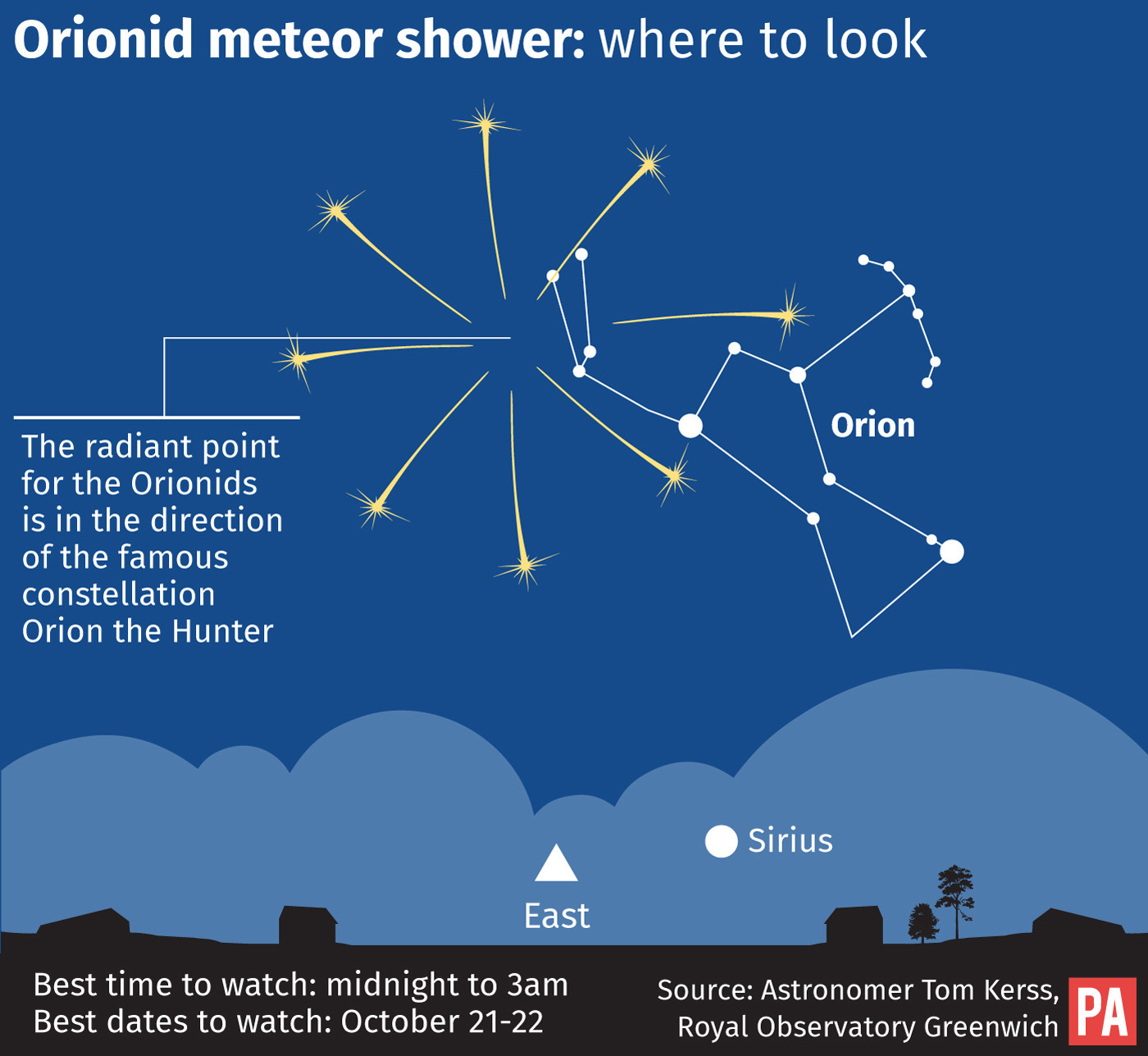Everything you need to know about the Orionid meteor shower
Debris from Halley’s Comet will strike the Earth’s atmosphere, illuminating the skies with streaks of light.

Astronomers are expecting to see about a dozen meteors as Earth passes through an area of space “littered” with the debris of Halley’s Comet.
The Orionid meteors appear every year at this time, with showers producing 20 or so meteors every hour.
Here’s everything you need to know about this celestial event:
Why is it called the Orionids?
It is expected to rise this weekend after 2130 BST.
Why does it occur?

“The annual Orionids meteor shower peaks this weekend, as the Earth passes through debris left behind by the famous Halley’s Comet,” said astronomer Tom Kerss, of the Royal Observatory Greenwich.
“The Orionids is a modest shower, producing around 20 meteors per hour at best under absolutely perfect conditions.”
When is the best time to see it?

“We expect the peak to occur on the night of 21/22 October (Saturday night and Sunday morning) when the young crescent Moon will set conveniently before the radiant of the shower – the point from which the meteors appear to spread out – rises in the East,” said Kerss.
“Make a plan to stay out between midnight and 3am on Sunday morning to give yourself the best chance, and enjoy the thrill of seeing tiny flecks of Halley’s Comet disintegrate at hypersonic speeds (safely) above your head.”
How will you be able to watch it?

“There’s no advantage to using binoculars or a telescope, your eyes are the best tool available for spotting meteors, so relax and gaze up at the sky, and eventually your patience will be rewarded,” said Kerss.
“Meteors can appear anywhere in the sky, though if you have to pick a direction, you might fare slightly better looking east.”
To maximise the chances of seeing the shower in all its glory, have your back to the Moon or make sure it’s hidden behind trees or buildings so the sky isn’t too bright. And don’t forget to take that blanket.





